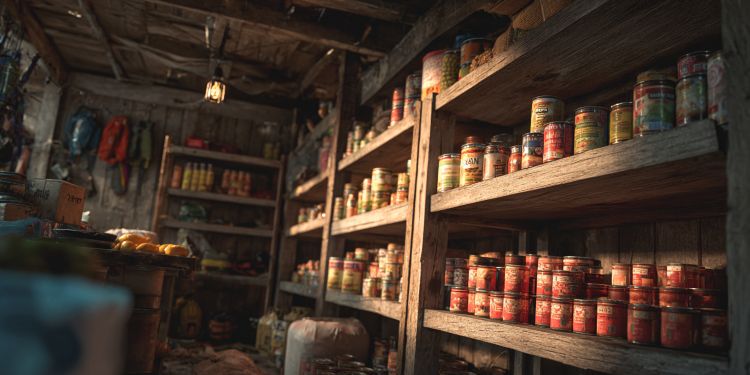How To Use An Oil Lamp

The modern world has convinced you that light comes from a switch. Flip it on, and everything glows. But what happens when that switch stops working? When the grid fails, when the blackout drags on, when your phone’s flashlight dies? That’s when real preparedness begins, and it starts with a flame.
An oil lamp isn’t some old-fashioned decoration. It’s independence in glass form. Before electricity, these lamps kept families alive through storms, wars, and long winters. They worked in every farmhouse, every cabin, every corner of the world that refused to go dark. Today, people look at them like antiques, until the power goes out and panic sets in.
Why Oil Lamps Still Matter
Think of an oil lamp as a controlled fire that feeds on patience and preparation. While everyone else scrambles for batteries or candles that burn out in hours, you’ll have light that lasts for days, even weeks. There’s no circuit to fry, no fragile wiring, no software update needed. Just oil, a wick, and the knowledge to use them.
Oil lamps aren’t just for emergency use. Preppers, homesteaders, and off-grid families keep them ready because they don’t rely on the system. That’s the secret: when everything collapses, the people with simple tools and old knowledge will always outlast those who depend on convenience.
Step 1: Choose the Right Lamp
There are three main types of oil lamps: flat wick, tubular (hurricane), and center draft. Each one has its purpose.
- Flat wick lamps are the classic tabletop type, simple, reliable, perfect for indoor light.
- Tubular lamps are built for outdoor or rough weather use, with glass chimneys that protect the flame from wind.
- Center draft lamps burn brighter and cleaner, ideal for long-term lighting.
If you can, get one of each. Flat wicks for steady home use, tubulars for the road or camp, and a center draft for when the grid finally flickers out for good.
Step 2: Choose the Right Fuel
This is where most people fail. Not every “lamp oil” is safe. Kerosene is traditional, affordable, and dependable, but it has a strong smell. Clear lamp oils burn cleaner but can be more expensive. Avoid gasoline or alcohol. That’s how houses burn down and lessons are learned the hard way.
If you want longevity, paraffin oil or odorless kerosene are your best allies. Store them in a cool, dark place, away from heat. One gallon can give you up to 200 hours of light, far more than any pack of candles or batteries.
Step 3: Fill and Wick It Properly
Remove the burner from the lamp base and fill the reservoir about two-thirds full. Never overfill, because oil expands with heat. Feed the wick through the burner and let it soak for 10 to 15 minutes before lighting. A dry wick burns unevenly and wastes fuel.
When lighting, keep the flame low at first. The top of the wick should glow, not flicker wildly. Adjust slowly until the flame is steady and bright. If the chimney blackens with soot, your flame is too high. If it’s dim, raise the wick slightly. It’s a balance, not a race.
Step 4: Maintain the Lamp Like Your Life Depends On It
Because one day, it might. Clean the chimney regularly to prevent smoke buildup. Trim the wick before every use so it burns evenly. Check for leaks or cracks in the glass, because small mistakes lead to big fires. Always store extra oil and wicks. You’ll thank yourself when supplies vanish overnight, as they always do when panic sets in.
A well-kept oil lamp can last for generations. Treat it like a tool of survival, not a decoration. The light it gives isn’t just physical, it’s symbolic. It’s the reminder that you’re self-reliant, not dependent on a fragile grid that’s one storm, one cyberattack, or one “policy change” away from failure.
The Light They Can’t Turn Off
They’ve made you believe light comes from corporations, not from your own hands. But the truth is simpler. Fire and oil have lit humanity’s path for thousands of years. Governments rise and fall, empires collapse, grids fail, but an oil lamp still burns.
When the next blackout hits and your neighbors panic in the dark, your lamp will glow quietly, proof that knowledge outlasts technology. Learn to use it now, while you still can. Because in a world that fears the dark, the one who keeps the flame becomes the light.
Prepare Before the Lights Go Out
If you’re serious about survival, light is only the beginning. The moment the grid collapses, food becomes the next crisis — and most people will realize too late that grocery stores are only 72 hours away from empty shelves. The question isn’t if that happens, but when.
That’s why every prepper should read The Lost Survival Foods. This powerful guide reveals how our grandparents preserved meat, fruits, and grains without electricity or refrigeration — methods that kept entire families alive during wars, famines, and disasters. It’s real, time-tested food independence, not survival “theory.”
When the power goes out and the world goes silent, you’ll need more than flashlights and canned beans. You’ll need knowledge. The Lost Survival Foods gives you exactly that — a blueprint to feed yourself when everything else fails. Because the ones who remember the old ways… are the ones who survive the new collapse.
You may also like:
 DIY Tin Oil Lamp In Case Of A Power Outage
DIY Tin Oil Lamp In Case Of A Power Outage
H2O Dynamo – The Awesome DIY Device That Turns Air Into Fresh Water! (VIDEO)
How To Make Survival Lamps With Used Cooking Oil and Mason Jars
Can You Join the Amish?
Read the full article here









